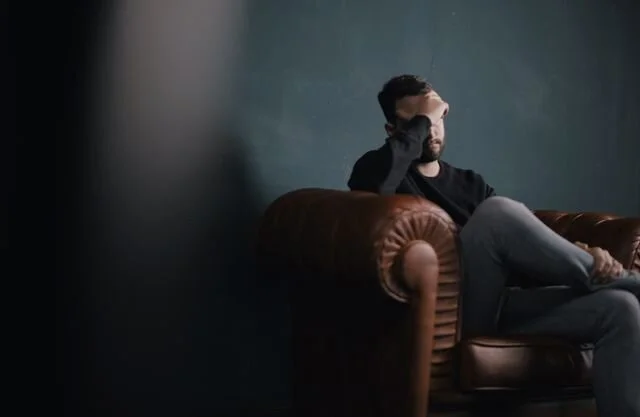In previous posts, I discussed the first three factors that fuel the presence of anxiety in your life. The first factor was fusing with your thoughts. This happens when you buy into and believe the thoughts that are created by your anxiety. The second factor was evaluating your experiences. This happens when your mind determines which thoughts and feelings related to the anxiety can be harmful or threatening, so you can come up with strategies to deal with them. The third factor is developing strategies to avoid the anxiety-producing thoughts and feelings.
The final factor that fuels the myths of anxiety is reason giving.
As you think about your anxiety and fear, and its presence in your life, you probably have lots of reasons about why you can or cannot do certain activities in your life. In their book The Mindfulness and Acceptance Workbook for Anxiety, John P. Forsyth and Georg H. Eifert offer a few examples of this reason-giving.
“I can’t fly in a plane because I might panic.”
“I can’t make new friends because I’ll make a fool of myself.”
“I can’t be in crowds because it’s too unsafe.”
“I can’t date because I was abused as a child.” (88-89, Kindle Version)
Forsyth and Eifert go on to say: “The content will differ across the reasons, but all have a familiar ring to them. Each includes an ‘I can’t” and a “because.” The part right after “I can’t” points to an important life experience, and the part after ‘because’ points to the problem that’s getting in the way” (89).
Now, at one level, this reason giving makes sense, especially when you look at the statements that follow the “because.” The truth is you might feel some panic when you step into the airplane, and you might do something with your new friends that can be seen as foolish. The truth is you were abused as a child. And yet, still, you are losing chances to do things that will give your life meaning and vitality.
One of the exercises I will ask people to do who are struggling with anxiety, often in the first session, is to complete this sentence: Because of my anxious thoughts and feelings, my fear, my panic, my worry, or disturbing memories, I have missed out on or am unable to… The answers they share contain activities that they would really like or which they were really looking forward to. Sometimes they start to feel a sense of sadness or despair, but I remind them that those activities are still there waiting for them, once they develop a different relationship with their anxiety.
This reason-giving can be more than thoughts; they can become a narrative that shapes your identity.
Several years ago, I was asked to speak to at a support group for Adult Children of Alcoholics (ACOA). I can’t remember the topic I presented, but after my presentation, they entered a period of discussion. I became aware of how almost everyone started their comments: Well, as an ACOA, I… And usually what followed was something about how it would be difficult to apply the ideas I had shared. After a few minutes, I pointed out what was happening. I wondered if their identity as an ACOA was hindering their ability to make changes that would add meaning to their lives. I remember asking the question, “What are you, what is true about you, besides being an ACOA?”
Now I was not trying to be critical (and I don’t think they took it that way). I believe that there are dynamics and struggles that are unique to people who are Adult Children of Alcoholics. But when one part of your life dominates the way you see yourself and interact with the world around you, it can offer lots of reasons for not doing activities or developing relationships the way you want.
Let me offer a way to respond to this reason-giving tendency. I call it the but/and practice.
Let’s reframe the reason-giving statements I mentioned earlier.
I want to fly in a plane, BUT I might panic.
I want to make new friends, BUT I might make a fool of myself.
I want to be in places that have crowds, BUT I might run into danger.
I want to date, BUT I was abused as a child.
Do you see what happens when you frame the reasons this way? The “but” sets the two parts of the statements in opposition to each other. You won’t be able to fly until you are sure you won’t panic. Because there is the chance you will make a fool of yourself, you can’t make new friends. And on and on it goes.
Now, let’s make the same statements with one simple change.
I want to fly in a plane, AND I might panic.
I want to make new friends, AND I might make a fool of myself.
I want to be in places that have crowds, AND I might run into danger.
Do you feel the difference? The “and” allows both of those statements to be present. If you maintain this stance, you get enough emotional flexibility that allows you to go ahead and choose a meaningful activity, even in the presence of the anxiety.
If you would like to learn more about how I work with people who struggle with anxiety and worry, I invite you to visit my anxiety treatment specialty page.



